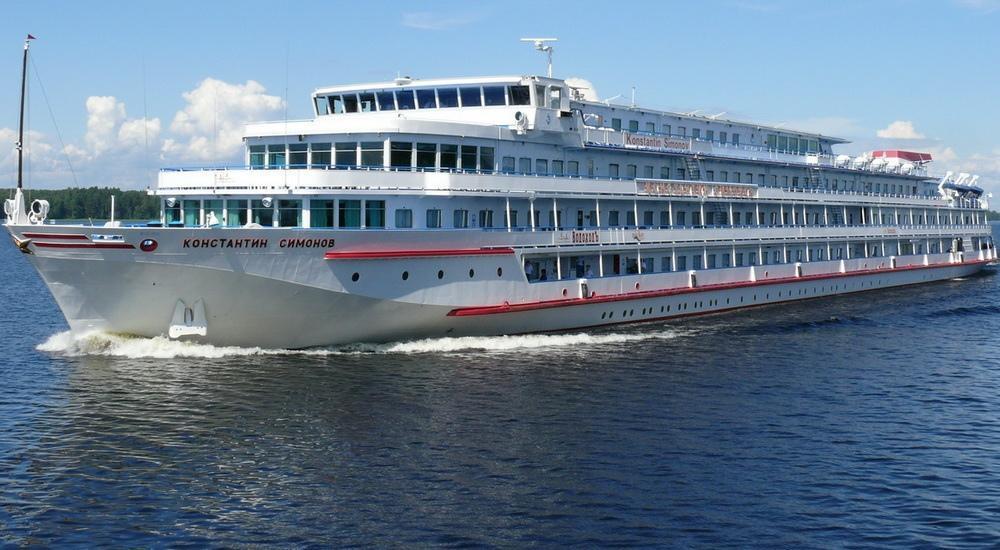Russian River Cruises
History, Review, Itineraries, Ships, Deck Plans, News
Russian River Cruises fleet
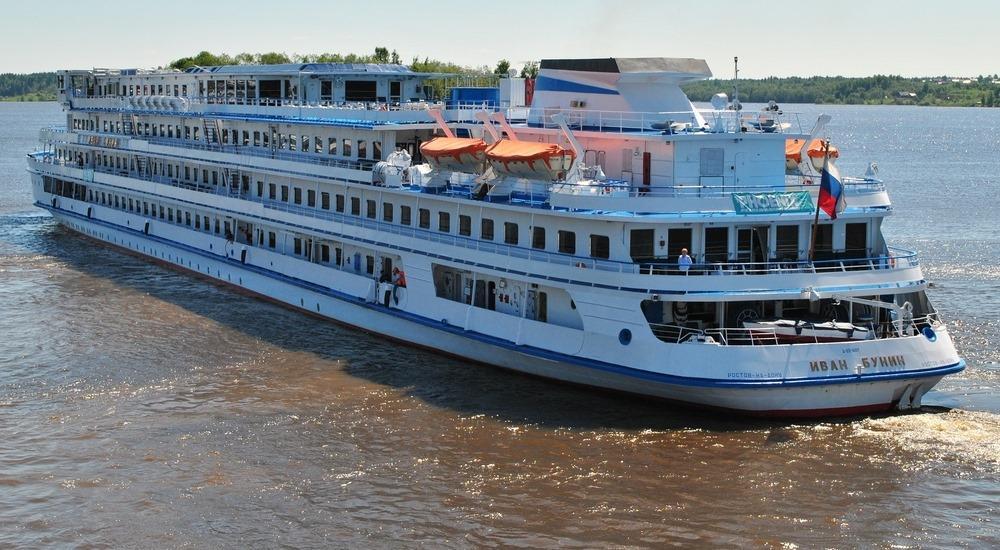
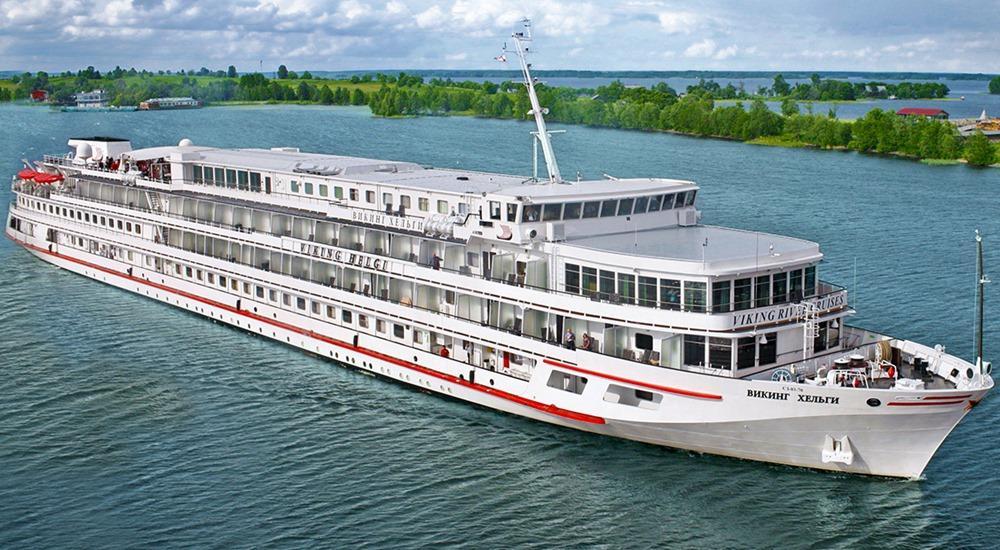
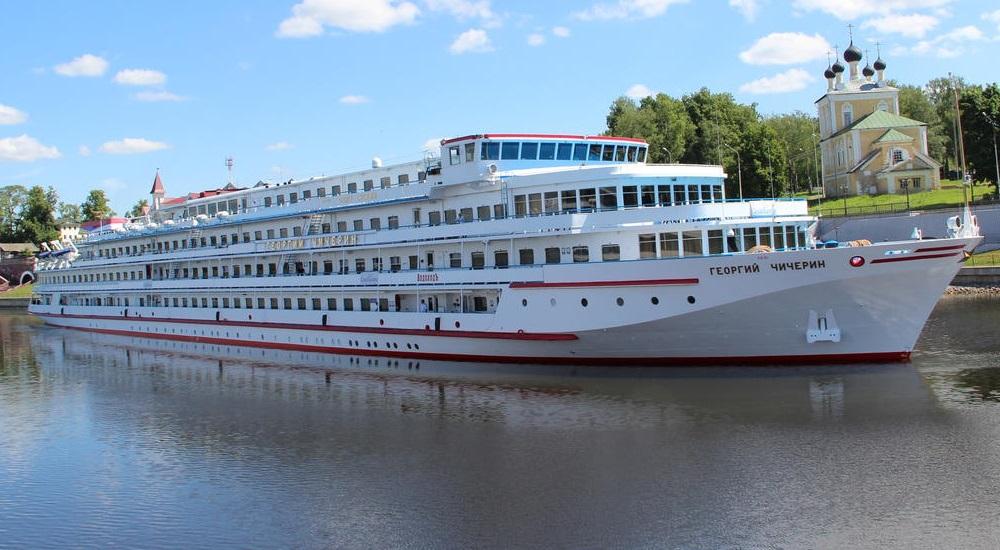

MS Sergei Rachmaninov
Current cruise: N/AOrthodox Cruise CompanyYear build 1983 / Age : 42 Passengers 285 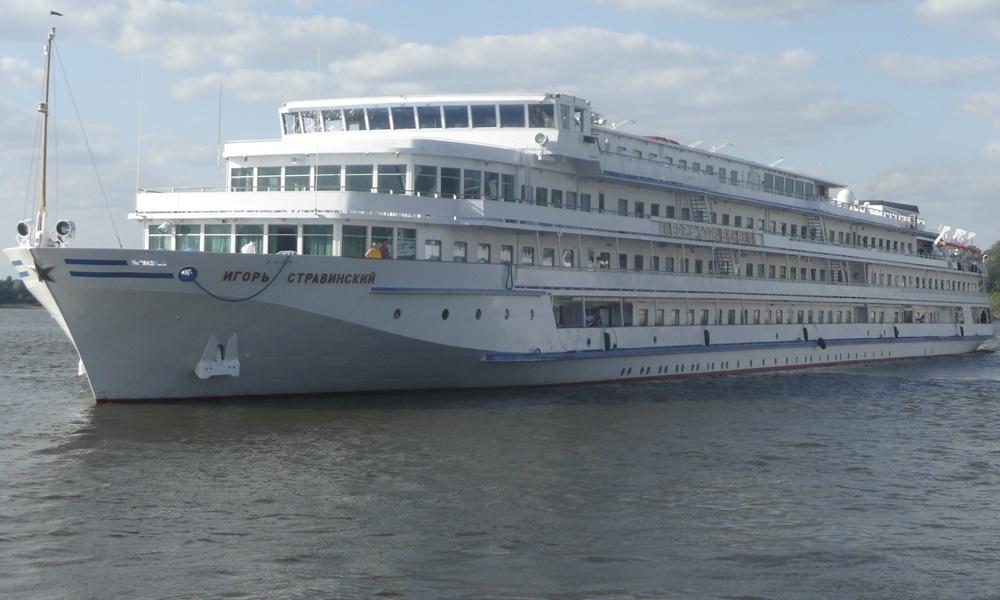
MS Igor Stravinsky
Current cruise: N/AOrthodox Cruise CompanyYear build 1983 / Age : 42 Passengers 190 - 250 

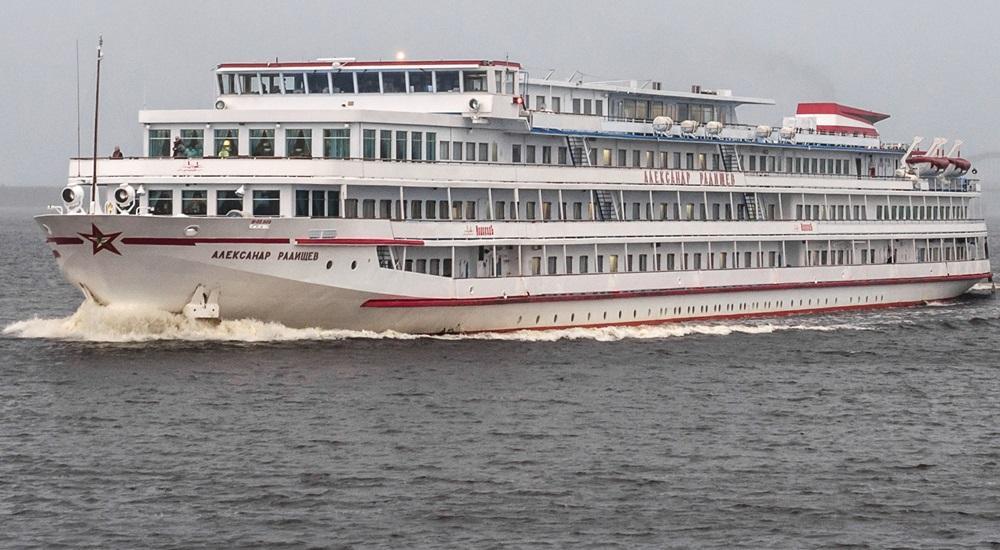
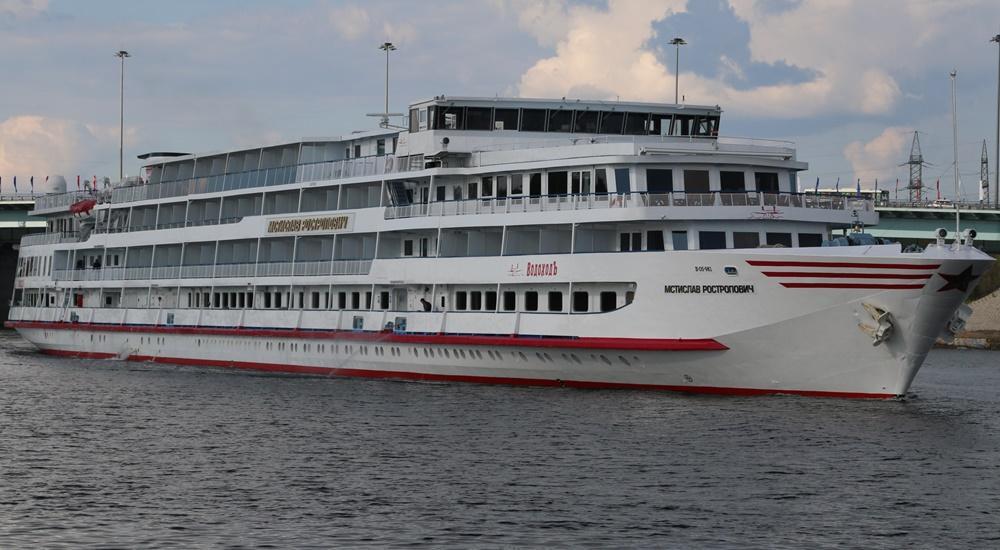
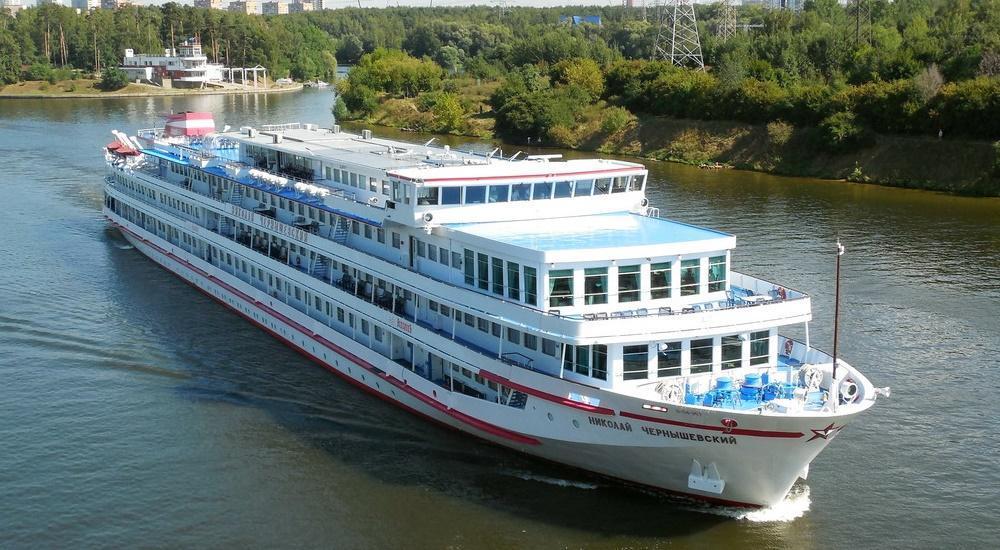
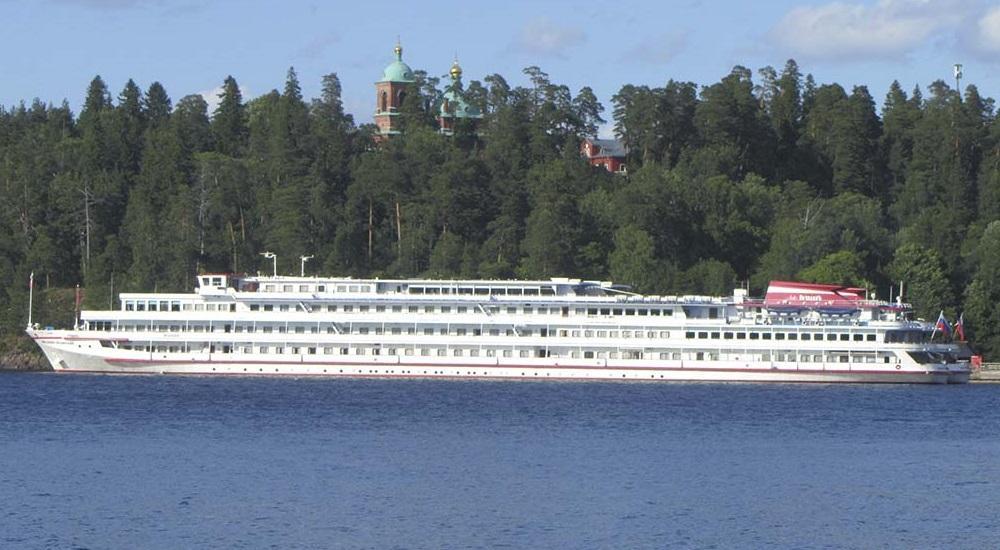
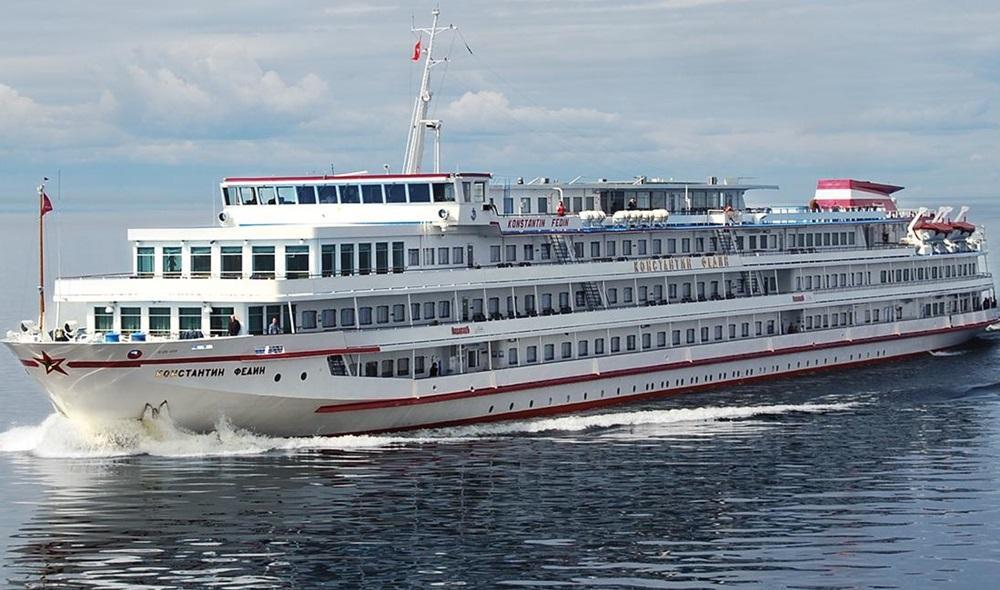

Review of Russian River Cruises
CruiseMapper's "Russian River Cruises" hub provides detailed information on ships, itineraries, tours, and prices for cruises along rivers and lakes in Russia. Here, you'll also find concise information on the largest Russian cruise companies, including Vodohod, Mosturflot, Infoflot, Doninturflot-Orthodox, and Imperial River Cruises Russia.
In the "Fleet" section, you will find an extensive list of Russian cruise ships. By following each ship's link, you can access the ship's review, deck plans, scheduled itineraries, and cruise pricing information. Live ship tracking is also provided on a digital map, showing the vessel's current location, cruising speed, and course.
In the "Itinerary" section, you'll find maps and day-by-day scheduled activities planned by Europe's largest cruise companies, also operating in Russia via chartered riverboats.

Volga River Cruises in Russia
Volga river cruising in Russia takes you back in time. The longest and largest river in Europe stretches from Ivan the Terrible to Catherine the Great. Today, life along the central artery of Russia looks much like it always has — the villages, the churches, and the people, resembling an old painting you may have seen in a gallery.
The Volga flows through central Russia into the Caspian Sea and is often called the national river of Russia. Eleven of the 20 largest cities of the country, including the capital Moscow, are in the Volga's watershed. Some of the world's largest reservoirs can be found along the river, which has symbolic meaning in Russian culture, often referred to as Mother Volga (Volga Matushka) in Russian folklore and literature.
Explore the land of the Tsars while sailing down the historic Volga River, typically between Moscow and St. Petersburg, the traditional homeports (of embarkation and debarkation). Tour landmarks include Red Square and the Kremlin in Moscow, and the Hermitage and Catherine Palace in St. Petersburg.
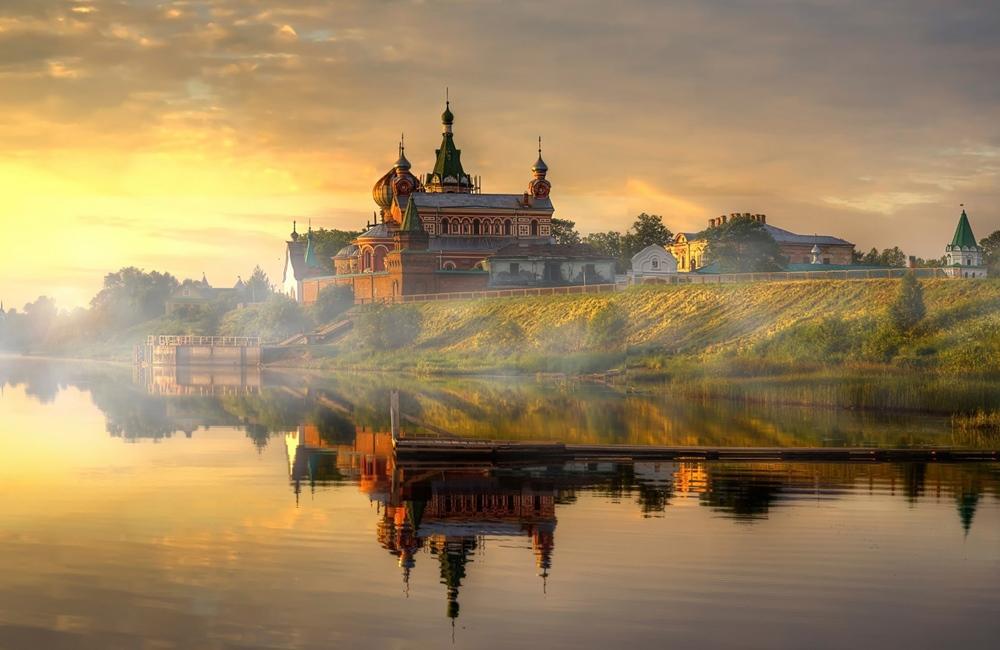
Once unthinkable as a cruise vacation destination, Russia is today more accessible than ever, with stops along its largest European lakes and rivers. For river travel lovers accustomed to European itineraries, the Russian experience will feel quite different. Russia's riverboats are uniquely designed to handle larger lakes (such as Lake Ladoga, the largest European freshwater body). These vessels are often larger, with up to six decks, deeper drafts, and most are refurbished rather than newly built.
The itineraries offered are activity-intensive in Moscow and St. Petersburg, with long periods of cruising and less time ashore in between. Smaller "Golden Ring" cities (so named for their historical significance) are filled with icon-filled monasteries and Orthodox churches. Most cruise lines hire local experts, and the days spent sailing along the river often include lectures on the country's history, cooking demonstrations, and language lessons.
Most of the tours offered by companies sailing along the Volga River are similar, so customers choosing between different itineraries should look at how the river ships spend time within Moscow and St. Petersburg. Some lines have their guests stay onboard, which can be as far as one hour from both cities, while others put their clients up at hotels near the city center, with several meals at the customer's expense.
Compared with other river routes, Russia has a short season, running from early May to late October, with peak season in June (known as White Nights due to the endless daylight), July, and August. Even if the weather is chilly, there are advantages to sailing early or late in the season: you'll avoid the crowds, which can make a visit to the Hermitage quite a challenge. Most Russian museums lack air conditioning, and while the climate is generally temperate, Moscow often experiences high humidity and heat waves in the summer.
Remember to consider your Russian visa at least two months before your voyage, allowing enough time to complete the paperwork, including a lengthy online application. Also, note that the Russian language uses the Cyrillic alphabet. Even in the cities, you'll rarely find signs in English, so learning some letters and a few phrases will help you get around.
List of the Largest Russian River Cruise Companies
Vodohod
Vodohod ("ВодоходЪ", founded in 2004) is Russia's largest river cruise line and a fully-owned subsidiary of "Volga Shipping Company." It has headquarters in both Moscow and St. Petersburg. The company's fleet includes all vessels from "Volga Flot Tour," totaling over 50 ships. Regions of operation include the Volga, Don, Kama rivers, Moscow canals, Volga-Don canal, Volga-Baltic Waterway, and the lakes Onega and Ladoga.
- Volga Shipping Company ("Волжское пароходство") was founded in 1843 as a steamship freight and passenger shipping company operating exclusively on the River Volga. The company was restructured in 1994 and currently owns a fleet of over 300 ships (including Vodohod's fleet) with an annual capacity of approximately 6.7 million tons (cargo) and around 400,000 passengers.
- In 2016, Vodohod's passenger capacity was 497,000. The reported revenue for 2015 was RUB 2.6 billion (USD 42 million).
- In 2018, the company introduced four fully refurbished ships: MS Chernishevsky, MS Fedin, and MS Kronshtadt.
In May 2020, Vodohod (via Algador Holdings Ltd) acquired Helsinki Shipyard Oy (formerly Arctech Helsinki Shipyard Oy, with all its assets). Through Helsinki Shipyard, Vodohod placed three shipbuilding orders for expedition cruise ships to be operated by its travel brand Swan Hellenic Cruises. The new builds were scheduled for delivery in 2021 (SH Minerva), 2022 April (SH Vega), and November 2022 (TBN).
In October 2020, Vodohod signed a strategic partnership agreement with Tam Wing Kun Holdings Ltd (founded in 1977, based in Hong Kong) to provide the company with a direct presence in Asia. Tam Wing Kun Holdings represents many of the world's largest airlines and logistics companies in Asia, with offices or partners in China, Thailand, Malaysia, Singapore, Vietnam, Indonesia, and The Philippines. As of 2021, Vodohod's fleet included 26 vessels (11 of which are dedicated to international passengers).
In February 2022, Vodohod inaugurated its Lake Baikal cruises (in Siberia) with the new-build hovercraft BIRYUSA. The 28-seat vessel was specifically designed and built (at Parma Shipyard) for the company's Baikal Lake tours. The unique vessel can reach speeds of up to 50 kph (31 mph) on calm water and 60 kph (37 mph) on ice, with an air cushion height of 1 meter (3 feet). It features premium leather reclining chairs, LED screens, a restroom, and luggage storage. The boat can navigate over water, ice, and land.
The 10-day itineraries run between homeports Irkutsk (Russia) and Ulan-Ude (Buryatia's capital city).
- Irkutsk-Taltsy-Lystvianka-Irkutsk-Maloye More-Ogoy Island-Sagan-Khushun Cape-Shaman Rock-Olkhon Gate-Khoboi Cape-Ust Barguzin-Barguzin Bay & Valley-Ulan-Ude (2 days)-Steppe Nomad ethno-complex-Ivolginsky datsan-Tarbagatai-Ulan-Ude.
- Vodohod's Baikal cruises are offered in both summer and winter, with fares inclusive of all excursions, meals, and accommodations.
Mosturflot
Mosturflot (Мостурфлот / Moscow Tourist Fleet / "Московский туристический флот") is a subsidiary of Moscow River Shipping Company (established in 1857).
- Mosturflot owns pleasure boats and cruise ships and is also licensed as a river cruise tour operator.
- The company provides its own ship repairs and technical maintenance, as well as shipping security, pilotage, and escorts (boat assistance).
- Mosturflot's cruise tour services include inland cruises (on its own boats) on the Russian rivers Volga, Neva, Kama, Don, Oka, and on the lakes Beloe, Onega, and Ladoga. Itineraries (a selection of over 300 routes) range from 1-day mini-cruises to 22-day cruises. The list of over 50 call ports features Uglich, Kostroma, Yaroslavl, Ples, Nizhny Novgorod, Murom, Kazan, Ufa, St. Petersburg, Moscow, Astrakhan, and Rostov. Main departure ports are Moscow and St. Petersburg.
- Mosturflot also operates as a travel agency for Russian (river and sea-going) and international cruises.
- The company organizes private cruise ship charters (for leisure and business meetings) with passenger capacities ranging from 8 to 300, optional staterooms, shipboard catering and entertainment, and custom-made excursions in port cities.
- Mosturflot's fleet includes the ships Rossia, Knyazna Victoria, Knyazna Anastasia, Sergey Obraztsov, Nikolay Karamzin, Andrey Rublev, Leonid Krasin, Gleb Krzhizhanovsky, Mikhail Bulgakov, Ilya Repin, Vasily Surikov, Sergey Yesenin, Alexander Grin, Valery Bryusov, Ivan Krylov, Russ, as well as the pleasure boats Maxim Gorky, Soyuz, and Mir.
Infoflot
Infoflot (Инфофлот) is a Russian cruise and tour operator company founded in 2003 and headquartered in St. Petersburg.
- Infoflot's fleet includes the boats Lebedinoye Ozero (Swan Lake), Lunnaya Sonata (Moonlight Sonata), Dmitry Furmanov, Nekrasov, Karl Marx, Alexander Benois, Vasily Chapaev, and Solnechnoy Gorod (Sunny City).
- The company's annual passenger capacity is about 100,000. It also serves as a travel agency for Russian and international river and ocean cruises.
Doninturflot-Orthodox Cruise Company
The Orthodox Cruise Company operates a fleet of USSR-designed large river ships and serves mainly foreign tourists. The parent company, Doninturflot (established in 1992), is the shipowner and manages the fleet.
- Doninturflot started operations with the ships MS Maxim Litvinov, MS Mikhail Sholokhov, and MS Sergei Dyagilev.
- Since 2002, Doninturflot has chartered Akademik Glushkov (currently MS Igor Stravinsky) from OOO Rosflotinvest.
- In 2004, it acquired MS Anton Chekhov from the Yenisei River Shipping Company (Russia).
- In 2006, MS Peter Tchaikovsky and MS Ivan Bunin were acquired from the Moscow-based cruise shipping company "Passenger Port."
- In 2008, MS General Lavrinenkov was bought from "Ukrrechflot" (Ukraine).
- In 2011, MS Marshal Koshevoy was purchased (from Ukrrichflot, Ukraine), but in April 2013, the ship was sold to Viking Cruises (now operating as Viking Akun).
- In 2016, MS Tikhi Don was purchased from the UK-based Grand Circle Travel. In 2017, the ship began operating for the Orthodox Cruise Company, serving international tourists.
Imperial River Cruises Russia
"Imperial River Cruises Russia" was founded in 1992 and operates on inland waterways in both Russia and Ukraine. The company's chartered ships navigate the rivers Volga, Don, Neva, Svir, Dnieper (also on the Danube), and the Russian lakes Onega and Ladoga.
The most popular itineraries are between Moscow and St. Petersburg, visiting Uglich, Kostroma, Yaroslavl, and Goritzy. Special itineraries visit Vladimir, Suzdal, Zagorsk, and Solovki Island. Other offerings include Moscow-Volgograd and Moscow-Rostov cruises, roundtrips from Kiev, and even grand voyages connecting two seas—the Baltic and the Black. The company also offers themed cruises, particularly focused on food and music, with live performances by grand orchestras and choirs.
Imperial River Cruises Russia has an exclusive partnership with the "Orthodox Cruise Company," one of Russia's largest tour operators. As their names suggest, both companies primarily target foreign tourists, booking passengers from the USA, Canada, the UK, and Australia. Ships' capacities range between 180-250 passengers, and English (or German) speaking licensed tour guides are provided for all excursions. The daily onboard entertainment program includes live musical performances, folk shows, and enrichment lectures.
Russian River Cruise Deals
- Departure port (dock/berth), check-in, boarding, and landing times are indicated on the company's website and on passenger boarding passes. The ship's exact departure time is clarified on the website the day before departure.
- Children up to 14 years old (14-year-olds included) are eligible for a discount on ticket prices, with age determined by the departure day.
- Children from 2 to 5 years old (5-year-olds included) travel free of charge, but without an additional bed (if there are no free beds in the cabin). Shore excursions are also free of charge.
- Toddlers (children under 2) travel free of charge, but no bed, food, or tour services are provided. Extra beds (baby cribs, cots) are not available on the ship.
- The single supplement rate for a twin (double) cabin is 75%.
- Ticket prices include three meals a day. Onboard dining consists of breakfast (buffet style, with cocoa, milk, juices, and hot/cold dishes), lunch (buffet style), and dinner (waiter-served, with 1 starter, 1 main course [choice of 3 options: meat, fish, or vegetarian], and 1 dessert [choice of 2 or fruits]). Water in pitchers is always provided, and tea/coffee is served.
- On embarkation and disembarkation days (at the end of the voyage), meal times depend on landing times. If a land tour coincides with meal time (e.g., lunch), passengers are provided with complimentary food at a local restaurant (cafe) or "dry rations".
- Ticket prices include the following onboard events: Welcome Aboard ("bread and salt" ceremony), Welcome Cocktail (complimentary 1 glass of champagne or juice per person), "Tea Ceremony" (with traditional pies), "Vodka Show" (blini and vodka tasting), Cocktail Party (once per cruise, complimentary 1 cocktail per person), Captain's Dinner (gourmet menu, once per cruise), mulled wine or iced tea (weather-dependent, upon returning from excursions), complimentary Coffee Station (coffee, hot water, tea, milk, cocoa, cookies), and 1 bottled water (0.33L per person per day in cabins). Tickets also include foreign language-speaking guide services, onboard entertainment (language class, singing lessons, live music, nightly dancing music, and a Wheelhouse tour).
- Complimentary excursions are detailed in the ship's cruise itinerary program. Optional tours are available for onboard booking. For excursion services, foreign passengers may incur an additional fee per person per day (varies by cruise tour length).
- Cruise tickets do not include land transfers (except for foreign travel agency bookings), beverages and snacks in onboard bars/lounges, phone calls, sauna visits, optional excursions, travel insurance, gratuities, or personal spending. Ticket prices include 18% VAT.
- Smoking on the ship is allowed only in designated areas (marked with "Place for Smoking" signs). Smoking is prohibited in all interior spaces and on open decks (except in designated areas).
- On most ships, health gymnastics and morning exercises are available (led by a certified physician/ship's doctor), along with oxygen cocktails and dietary food options.
- On most ships, free medical services are available, including emergency medical care (for sudden acute illnesses or exacerbations of chronic diseases), blood pressure and body temperature measurements, and primary treatment for wounds.
- Boarding starts 2 hours prior to departure. All passengers must be onboard at least an hour before departure. Late passengers who miss their cruise will not be refunded.
- Russia's main river cruise departure ports include Moscow, St. Petersburg, Astrakhan, Nizhny Novgorod, Perm, Samara, Kazan, Volgograd, Rostov-on-Don, and Saratov.
Russian Cruise Ships
Currently, over 200 river cruise ships are in operation in Russia. Most of these vessels were built during the USSR (Soviet Union) era, roughly between 1950 and 1990. Depending on class and series, these boats vary in size, equipment (including different engine designs), passenger capacity, onboard facilities, and cabins (types and numbers). Amenities also differ by shipowner (cruise company).
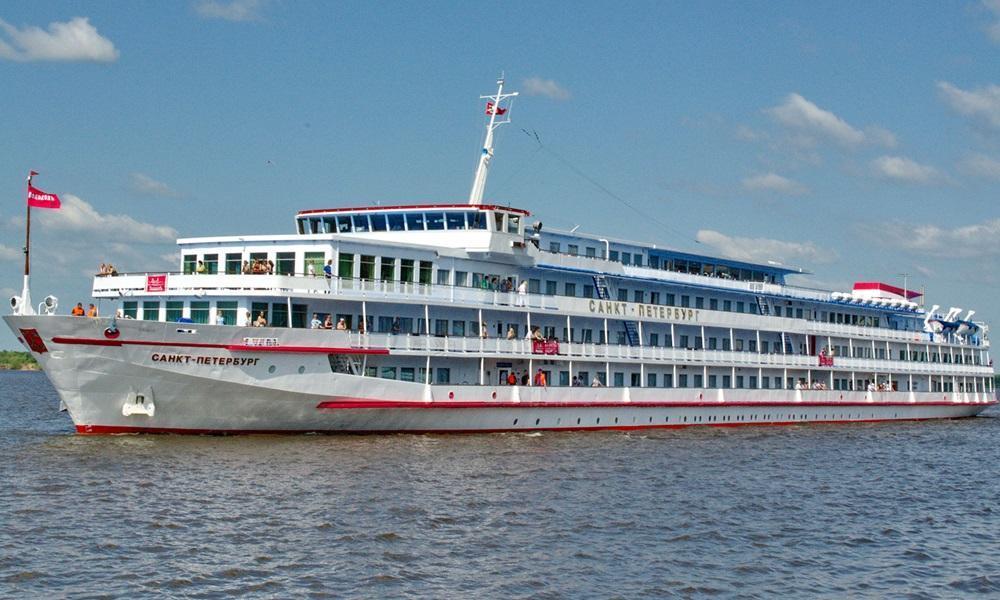
All these old-design Russian ships were completely refurbished and rebuilt for their new shipowners. Some of these ships are operated (via partnerships or under charter) by foreign companies (such as Viking, CroisiEurope, Uniworld, AMAwaterways, Grand Circle, and Nicko). During their multi-million-dollar drydock refits, the vessels' passenger capacities were significantly reduced to improve travel comfort and safety.
Most boats are of the following classes:
- "Rossiya" (Project 785, 36 vessels built 1952-1958)
- "Baykal" (Project 646, 15 units built 1953-1956)
- "Rodina" (Project 588, 49 vessels built 1954-1961)
- "Oktyabrskaya Revolyutsiya" (Project 26-37, 14 units built 1957-1962)
- "Dunay" (Project 305, 47 vessels built 1959-1964)
- "Kuybyshev" (Project OL400, 9 units built 1975-1983)
- "Vladimir Ilyich" (Project 301, 22 vessels built 1975-1983)
- "Dmitri Furmanov" (Project 302, 27 vessels built 1983-1991)
Regardless of their age, all these motor ships undergo regular drydock refurbishments, machinery and safety checks, and scheduled repairs (including annual surveys). Drydocks occur every 5 years and include repairs, hull inspections, propulsion and steering inspections, and general maintenance work.
Each ship is equipped with life-saving appliances (lifeboats and rafts) in amounts exceeding the boat's maximum passenger and crew capacity. Each cabin is equipped with lifejackets and illustrated instructions in several languages. All ships also feature modern fire-fighting systems, and the crew and staff are experienced, highly professional, and certified employees.
New Russian Cruise Ships
In August 2016, at Lotus Shipyard (Astrakhan, Russia), part of USC (United Shipbuilding Company), the construction of the first Russian passenger ship since the Soviet era began. The new PV300-class cruiser received support from Russian Federation President Vladimir Putin.
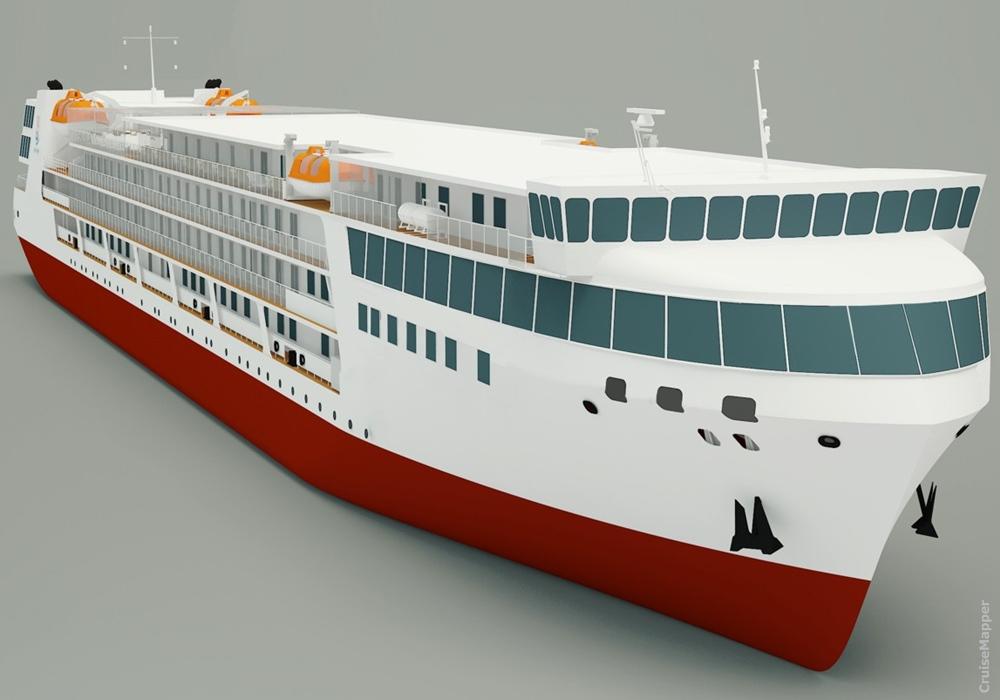
The Marine Engineering Bureau developed the PV300VD cruise ship design, with the first ship completed and launched in 2019 (Pyotr Velikiy/Пётр Великий). The project belongs to the Saint Petersburg team of the Marine Engineering Bureau SPb, operating in Russia since 2000. The company also has a branch in Odessa, Ukraine.
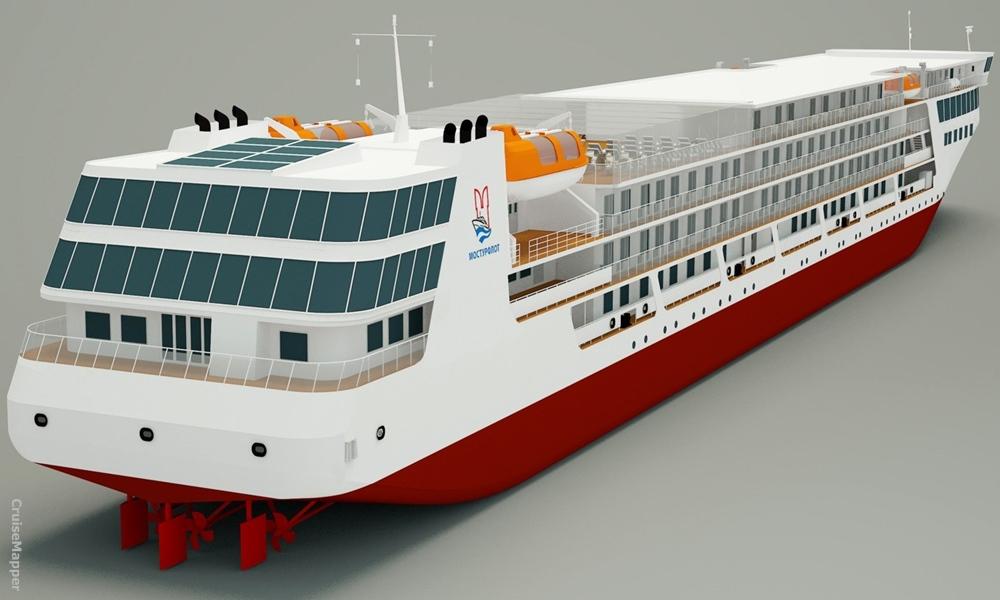
The first USSR-built river cruise ships (MS Soviet Union and MS Lenin) were constructed at Gorky Plant in 1959-1960. The Soviet Union also bought foreign-built riverboats until 1989-1990. However, these were custom-designed for operation in Russian conditions (seasonal navigation on large rivers and lakes). These vessels were mainly built in Austria, East Germany, and Czechoslovakia. After 1990, Russian riverboats were no longer ordered, and the business continued with older vessels. The same situation occurred with the Russian passenger fleet, as ships were banned in North America after Russia's invasion of Afghanistan (1979-1989).
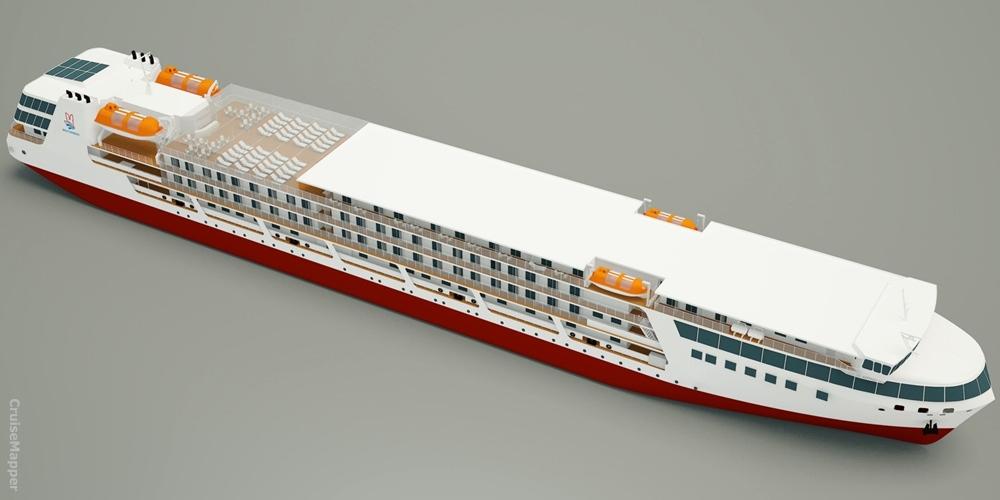
Russia's new passenger ships are designed as "river-sea" cruisers. The PV300 class was developed for waterways with maximum waves of 3 meters (inland seas and large lakes). These new Russian cruisers are much more powerful than the typical riverboats used on the Danube and Rhine. The new ships, which carry up to 310 passengers, have dimensions of 141x17 meters (463x56 feet). The PV300VD concept was developed between 2010 and 2015 by order of Russia's Federal Marine Agency. The state customer and coordinator of the program was the Ministry of Industry and Trade. The ships are expected to cost between RUB 2.5-3.5 billion (USD 37-52 million), with a payback period of 5-20 years. The design of Mosturflot-Vodohod's new project PV300VD is shown below.
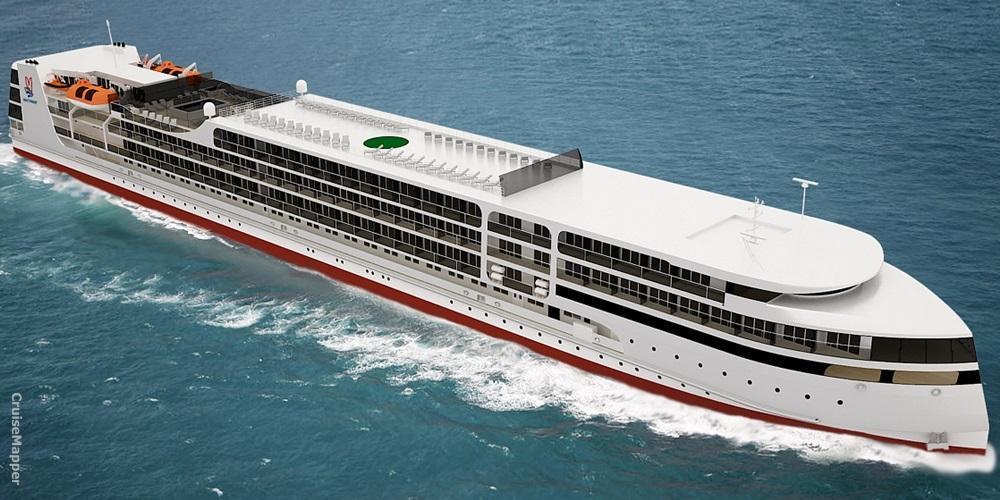
The next photo combo shows the design of Mosturflot's PV300 ship project.
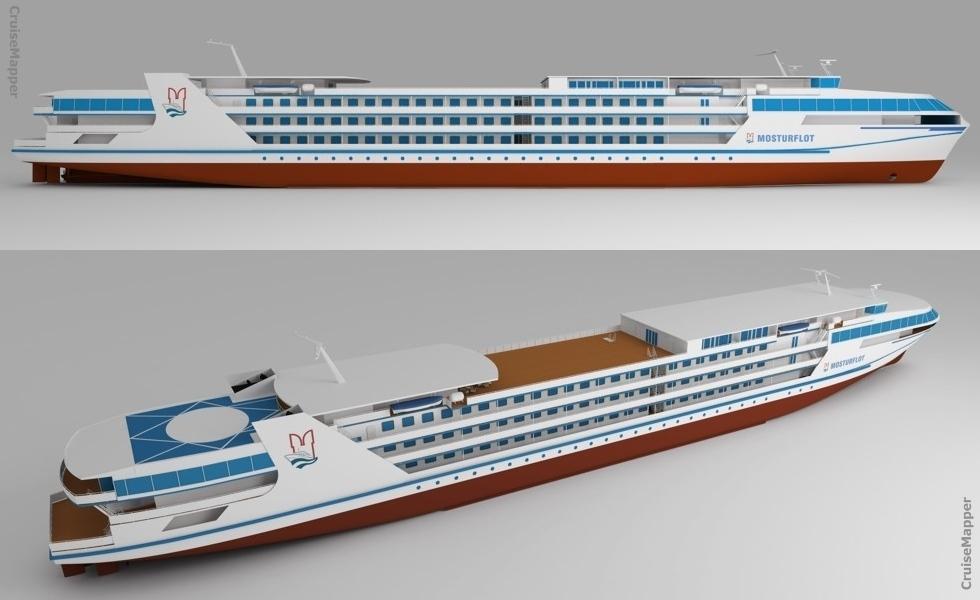
The new Russian ships will operate seasonally (May to October) between Moscow and St. Petersburg, and then take travelers from Moscow to Samara and Rostov-on-Don. In the winter, the ships will cruise the Eastern Mediterranean (and even further south to the Red Sea), with calls in Rostov-on-Don, Taganrog, Novorossiysk, Sochi, Trabzon, Turkey, Istanbul, Turkey, and Alexandria, Egypt. Black Sea cruises will also visit the largest ports in Crimea (Sevastopol, Yalta, Feodosia, Kerch, Yevpatoria), as well as ports on the Azov Sea and Caspian Sea.
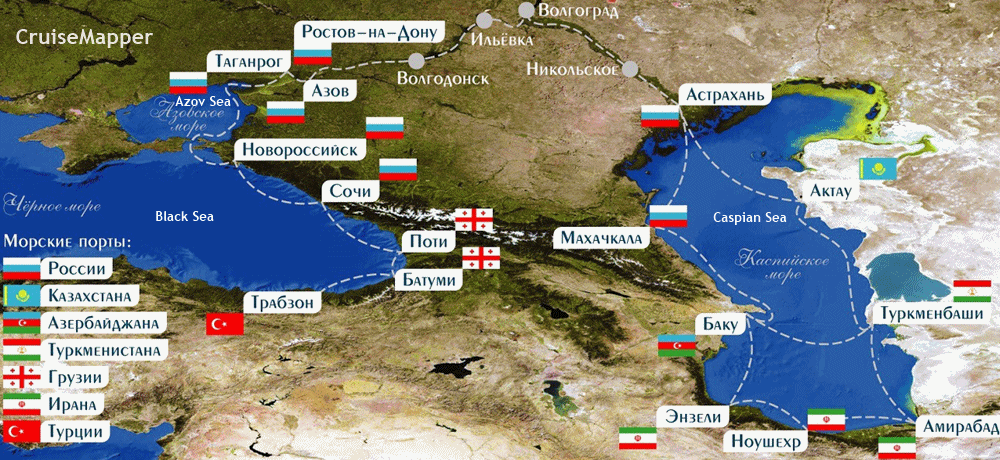
The newbuilds could carry about 500,000 passengers annually, of which about 100,000 would be foreign tourists. The number of foreign tourists declined by nearly half in 2014 as western tour operators reduced Russian programs and westerners stayed away. According to the Ministry of Industry and Trade, the new ships will be operated by companies like Mosturflot (GK Sea and River Shipping Company), Vodohod, and Orthodox. Due to the high cost of the vessels, they will likely be leased to operators. The main difference of these four-deck ships is that they will be able to navigate both rivers and seas. They will also be more luxurious than previous ships and will feature Western amenities such as French balconies and large comfortable suites.
Volga River Cruise Port Terminals
Below are the VODOHOD ship terminals (dock sites/berths) and their addresses:
- Moscow - North River Station (Metro "Rechnoy Vokzal," Leningradskoye Str 51) - Северный речной вокзал, метро "Речной вокзал", Ленинградское 51
- St. Petersburg - Utkina Zavod pier (Oktyabrskaya Naberezhnaya Str, 31, free shuttle bus service is provided from Proletarskaya metro station to the dock) - причал "Уткина Заводь", Октябрьская набережная, 31
- Nizhny Novgorod - Nizhne-Volzhskaya embankment (berth 14) located in front of "The Hero" monument, Markin Square, 15A, berths 5-6 (Нижне-Волжская набережная, причал 14, площадь Маркина, 15А., причалы 5-6), "River Station" (berths 5-6, Markina Square 15A) - Причал "Речной Вокзал" 5-6 (пл Маркина 15А), Причал 14
- Samara - Maxim Gorky Str, 82 (berths 3-4) - Максима Горького, 82 (причалы 3-4)
- Kazan - Devyataev Str, 1 (Девятаева, 1)
- Astrakhan - River Station berth (Admiralteyskaya Str, 1, pier 17) - Причал "Речной Вокзал", Адмиралтейская 1, пристань 17
- Perm - River Station berth (Ordzhonikidze Str 2) - Причал Речной Вокзал (Ул Орджоникидзе 2)
Note: You can find CruiseMapper's list of all river cruise ships and riverboats in the "itinerary" section of our River Cruises hub. All river passenger shipping line companies and their fleets are listed there.
Itinerary of Russian River Cruises
CruiseMapper's "Russian River Cruises" itinerary section offers information on itineraries and ports of call provided by the largest Russian and European river cruise companies, including Vodohod, Viking, Uniworld, Scenic, and CroisiEurope. Each foreign company partners with a local company and operates one or more Russian ships as part of a joint venture.
For detailed itinerary information (routes), visit our pages for the following departure ports: Saratov, Volgograd, Samara, Perm, Nizhny Novgorod, Cheboksary, Rostov-on-Don, Kazan, Astrakhan, Moscow, St. Petersburg.
Volga River Cruise Ports Highlights
- St. Petersburg (Russia's second-largest city after Moscow) was founded by Tsar Peter the Great in 1703. It is located in the Neva River delta on the Gulf of Finland’s east coast. Saint Petersburg comprises more than 130 islands connected by over 300 bridges. The city boasts numerous cultural and historical sites, architectural landmarks, museums, palaces (former residences of Russian Tsars), grand parks, wide avenues, bridges, and monuments. Among its most famous attractions are the Hermitage Museum (housing over 2 million art pieces). Two days are never enough to explore everything this remarkable city has to offer. However, passengers will typically visit the Hermitage, admire the city's 19th-century architecture during a canal cruise, enjoy a cultural performance, and visit one of the Versailles-style palaces in the countryside (Pushkin or Peterhof).
- Moscow (the capital and largest city of the Russian Federation) was founded in 1147 by Prince Yuri Dolgoruky. The city has been destroyed multiple times—by the Mongols, Napoleon, and the Nazis. The heart of the city lies in Red Square, home to Lenin's Tomb, St. Basil's Cathedral, and the GUM Department Store. The red walls of the Kremlin also border the square. Inside the fort are the Armoury (housing the Fabergé eggs) and nine onion-domed churches. Art lovers can explore the Pushkin Gallery or attend a performance at the Bolshoi Theatre.
- Yaroslavl is one of the Golden Ring cities of Russia and the largest city visited during the middle of your Volga cruise. The town is famous for its stunning churches. It also features several pedestrian-only streets lined with shops and cafes, as well as a scenic embankment used as a park.
- Uglich is a town with a provincial charm. Founded in the 10th century, it was the site of several significant events in medieval Russian history. Ivan the Terrible’s seventh wife and her son, Tsarevich Dmitry, were exiled here. Tsarevich Dmitry was mysteriously murdered, and a church dedicated to this event, the "Church of St. Demetrius on the Blood," was built. Within the Uglich Kremlin walls lies the town’s oldest building, the "Prince’s Palace." Other attractions include St. John’s Church and the Transfiguration Cathedral.
- Astrakhan was founded in the late 13th century and is located on the left bank of the Volga. The port's activities extend 100 km downstream and over 300 km upstream along the river. The city is a major trading hub, with its main business being freight shipping (coal, timber, salt, food, and industrial products). Astrakhan is not connected to the railroad network, so cargoes are transferred by floating cranes from river ships to seagoing vessels.
- Goritsy is a small village on the Sheksna River, famous for its Resurrection Convent. Approximately 7 km from Goritsy lies Kirillov, a pilgrimage site with numerous historical and architectural monuments, including the Kirillo-Belozerski Monastery, the Ferapont Monastery (a UNESCO site), 12 churches, and 25 civil monuments.
- Kizhi Island (Lake Onega) is located about 70 km (40 miles) northeast of Petrozavodsk. The island is home to two onion-domed churches, including the 17th-century, 22-domed church—built without the use of a single nail. The "Church of the Transfiguration of Our Savior" and the "Church of the Intercession" have been rebuilt multiple times but remain preserved in their original 17th-century design.
- Mandrogi (Mandroga) is a small village on the Svir River, created as a tourist destination. It features traditional wooden log cabin houses and a “town of masters,” a market for handmade Russian crafts, including paintings, painted wooden dolls, embroidery, and pottery. Other attractions include an elk nursery, a quail farm, horse-riding tours, food tasting (pastry), and vodka tasting (in the Museum of Russian Vodka).
- Kostroma is another of the Golden Ring cities and was once one of Russia's three largest cities, following Moscow and Yaroslavl. It is located at the confluence of the Volga and Kostroma rivers. Attractions include the St. Ipathy Monastery and an open-air museum showcasing traditional wooden architecture—izbas, mills, and churches all gathered in one place.
- Kizhi is globally renowned and symbolizes the grandeur of unique Russian culture. Visiting Kizhi Island provides an excellent opportunity to experience the enchanting medieval atmosphere and learn about the customs and lifestyle of people living in a remote, harsh climate.
- Kazan is the largest port in the Volga basin, handling cargo transported solely by water or by both water and rail. The port receives coal from the Kuznetsk Basin for Kazan’s heat and electric power plant, as well as food and industrial products, and exports products from the city's industries and Siberian timber. The port includes Tsentral'nyi, Kama, and Volga cargo areas, as well as numerous landings, the largest being Naberezhnye Chelny and Chistopol. The Tsentral'nyi Cargo Area and passenger area are protected by a breakwater.
- Nizhny Novgorod is an ancient stronghold founded by Grand Prince Yuri as a frontier post. Today, it is the fifth-largest city in Russia and one of the country's key centers of river tourism. In the 19th century, Nizhny became a trade hub, hosting the largest fair in the Russian Empire. A popular saying of the time goes, "Moscow is the heart of Russia, St. Petersburg is its head, and Nizhny Novgorod is its pocketbook." The city was renamed "Gorky" in Soviet times in honor of writer Maxim Gorky, born there. Until 1990, Nizhny Novgorod was closed to foreigners due to military secrecy. Nizhny Novgorod is included in UNESCO's list of 100 cities of global cultural and historical significance.
- Samara—formerly known as Kuybyshev during the Soviet era—was named after Soviet party figure Valerian Kuybyshev. The shortest routes from Central and Western Europe to Kazakhstan, Siberia, and Central Asia pass through Samara. The city has a rich cultural heritage, having been home to Alexey Tolstoy during his childhood and youth. Maxim Gorky started his literary career there, working for the "Samara Newspaper." Czech writer Jaroslav Hašek also worked in the city during the Civil War. Famous artists like Ilya Repin, Ivan Ayvazovsky, and Vasily Surikov lived in Samara. During World War II, the Seventh Symphony by Dmitry Shostakovich was first performed there.
- Tver is home to the White Trinity Church (1564), the only ancient monument in the city, as the city was rebuilt in Neoclassical style following a devastating fire in 1763. Tver also has many buildings from the time of Catherine the Great. Tver State University is highly regarded in the region. In 1931, Tver was renamed Kalinin in honor of Soviet leader Mikhail Kalinin. During World War II, the city was occupied by the German army but was liberated two months later, becoming the first major European city to be freed from occupation.
- Ulyanovsk is located on the right bank of the Kuibyshev Reservoir. The port’s activities extend 90 km downstream and 100 km upstream along the Volga. The port handles mineral construction materials, food, and industrial products for the cities of Saransk and Ulyanovsk, and ships out coal from the Kuznetsk Basin, automobiles, and foodstuffs. The passenger area was rebuilt in 1969 and includes a large number of landings, the biggest being Melekess and Sengilei. The basin of the Ulyanovsk port is protected by a breakwater.
- Saratov (founded in 1590) is the capital of a vast province that is roughly the size of Albania, Belgium, and Switzerland combined. In the late 19th century, Saratov became a center of industry and trade. Notable attractions include Moskovskaya Street (Europe’s longest straight street), one of Europe’s longest bridges (2.8 km long), a children’s theater, a puppet theater, Russia’s oldest circus, a musical conservatory, beaches, art galleries, Lipki Park, and two large casinos.
- Volgograd (formerly Stalingrad) was founded in 1589. It is a major port and shipping hub connecting the Donets Basin with the Urals and Upper Volga Region. It ships grain, coal, food, and industrial products upstream and receives mineral construction materials and timber. Volgograd’s attractions include Mamayev Hill with numerous sculptures dedicated to World War II victims, topped by the world’s largest freestanding statue, "Mother Russia" (52 m / 171 ft). Adjacent is the "Museum of the Defense," which houses war artifacts, weapons, and uniforms.
All ships listed here operate on Russian waterways. In addition, the following boats are currently listed in the fleets of their respective companies:
- Scenic Tsar (company Scenic Cruises)
- River Victoria (company Uniworld)
- Viking Rurik, Viking Akun, Viking Helgi, Viking Ingvar, Viking Truvor (company Viking Cruises)
Viking River Cruises in Russia - Itinerary "Waterways of the Tsars"
Viking's "Waterways of the Tsars" is a 13-day cruise that includes:
- All transfers and port charges
- Riverview stateroom
- 10 guided tours (audio headsets provided)
- All onboard meals (including 12 breakfasts, 11 lunches, 12 dinners, Welcome Cocktail Reception, Gala Dinner)
- Complimentary beverages (wine, beer, and soft drinks with all dinners and lunches)
- Complimentary Wi-Fi
- Visiting four UNESCO World Heritage Sites
- Enrichment events (onshore live music and dance performances), onboard Russian language lessons, history-themed lectures, Russian cooking workshop, and Russian tea time
- Viking's Russian cruise fares range from USD 5,100 to 5,600 per person. Prices include international airfare from 30 USA airports.
- Airport transfers (meet & greet) are included only when flights are purchased through Viking Cruises.
Optional (additional cost) extensions are available:
- (Pre-cruise) 2-night Moscow hotel package (Radisson Royal Hotel or similar), including 2 breakfasts, a Moscow Subway guided tour, and Viking host services.
- (Post-cruise) 3-night Helsinki hotel package (Radisson Blu Plaza or similar), including 3 breakfasts, a guided walking tour, Viking host services, train travel (St. Petersburg to Helsinki), and all hotel and ship transfers.
The itineraries are two options: northbound (Moscow to St. Petersburg) or the reverse southbound (St. Petersburg to Moscow).
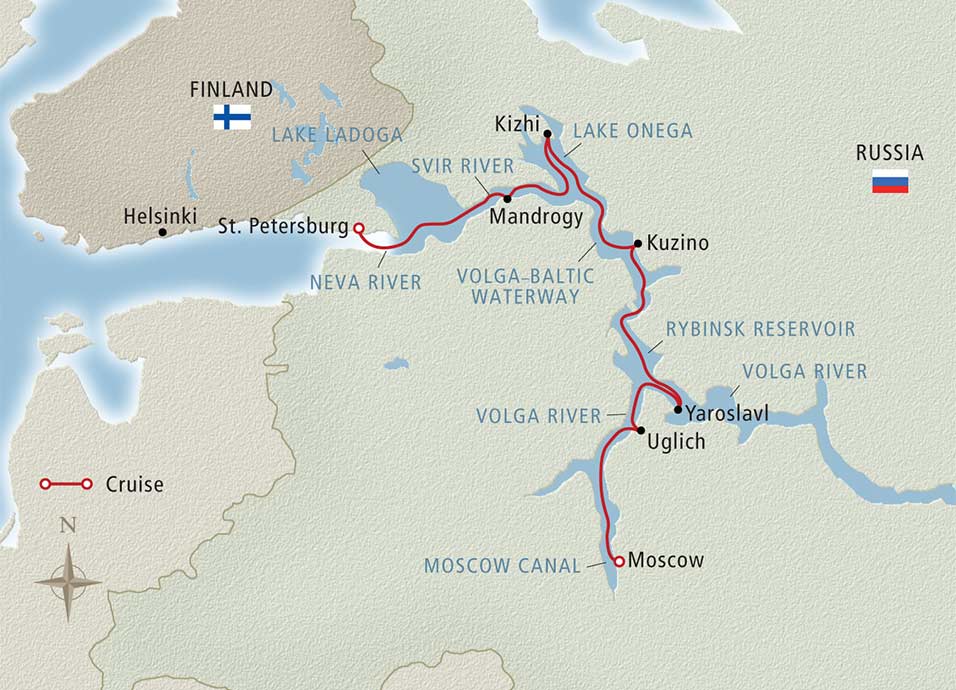
- (Day 1) Moscow arrival, airport to ship transfer, onboard dinner
- (Day 2) Half-day Moscow tour (Bolshoi Theater, Red Square, St. Basil's Cathedral, GUM Department Store, Moscow Metro)
- (Day 3) Free day for full-day Moscow touring or optional morning tour to the Tretyakov Gallery (Russian fine art museum). Other optional afternoon tours include the Cosmonaut Museum, Jewish Moscow, and an evening tour of Moscow by Night.
- (Day 4) Moscow tour to the Kremlin (Tsar's Cannon, Tsar's Bell, two cathedrals), scenic Moscow Canal cruise (after lunch) as the ship departs the city.
- (Day 5) Uglich arrival (after lunch), disembarkation for a guided walking tour (Kremlin of Uglich, Church of St. Dmitry on the Blood, tea at a local family home), before dinner departure
- (Day 6) Yaroslavl arrival in the morning, guided tour (covered food market, handcrafted souvenirs shopping), free time, ship lunch, departure.
- (Day 7) Kuzino morning arrival, tour to Kirillo-Belozersky Monastery (guided walk—wooden chapels, Assumption Cathedral, museum), children's school, ship lunch, afternoon departure.
- (Day 8) Kizhi Island (Lake Onega cruising) afternoon arrival, walking tour (Open Air Museum of Architecture—wooden houses, windmills, churches, Preobranzhenskaya Church), evening departure.
- (Day 9) Mandrogy (Svir River cruising) afternoon arrival (Vodka Museum, handmade Russian craft shopping, optional banya/Russian bathhouse visit, optional matryoshka doll-making workshop), Lake Ladoga cruising to Neva River.
- (Day 10) St. Petersburg (Neva River cruising), early morning arrival, onboard breakfast, guided tour (Winter Palace, Hermitage Museum), onboard dinner, and evening live Russian ballet performance.
- (Day 11) St. Petersburg tour to Pushkin district (Catherine Palace), ship lunch, city tour (St. Isaac's Cathedral, Peter and Paul Fortress, Nevsky Prospekt), optional evening folklore performance.
- (Day 12) Free day for St. Petersburg touring (optional morning tour to Peterhof Palace, optional afternoon kommunalka tour, optional St. Petersburg canal cruise), onboard lunch and dinner.
- (Day 13) St. Petersburg - onboard breakfast, ship disembarkation, ship to airport transfer for the return flight.
Uniworld Cruises in Russia - Itinerary "Imperial Waterways of Russia"
The 13-day "Imperial Waterways of Russia" itinerary is operated by the ship River Victoria. Uniworld's Russian cruise fares range from USD 5,200 to 9,900 per person (depending on cabin category).
- Day 1 – Moscow (Sheremetyevo Airport arrival, ship transfer, embarkation)
- Day 2 – Moscow (city tour, metro tour, Arbat Street) - Bolshoi Theatre, Red Square, St. Basil's Cathedral, Russian lunch included, onboard Captain's Welcome Reception, Gala Dinner
- Day 3 – Moscow (Kremlin, Armory Museum)
- Day 4 – Moscow (leisure day)
- Day 5 – Moscow Canal and Volga River cruising to Uglich (walking tour)
- Day 6 – Yaroslavl (Lake Rybinsk cruising) - city tour
- Day 7 – Goritsy (Lake Onega cruising) - monasteries, St. Cyril of the White Lake Monastery, Children’s Arts and Crafts
- Day 8 – Kizhi Island (Lake Onega cruising) - Open-air Museum of Wooden Architecture
- Day 9 – Svir River cruising to Mandrogi, Lake Ladoga cruising - Mandrogi walking tour (picnic lunch)
- Day 10 – St. Petersburg (city tour, canal cruise, Church of the Savior on Spilled Blood, ballet performance at Alexandrinsky Theatre)
- Day 11 – St. Petersburg (Catherine Palace, Pushkin Park)
- Day 12 – St. Petersburg (Winter Palace - Hermitage Museum, Captain’s Farewell Reception, Gala Dinner)
- Day 13 – St. Petersburg (disembarkation, transfer, and return flight).
Scenic River Cruises in Russia - Itinerary "The Imperial Wonders Of Russia"
The "Imperial Jewels of Russia" itinerary is operated by Scenic Tsar and lasts 15 days, cruising along the Volga and Svir rivers. Scenic Cruises' deals include:
- Scenic Enrich - handcrafted, Scenic-exclusive passenger experiences (private shows, family meals prepared by local hosts)
- Scenic Sundowners - exclusive cocktail events
- All onboard meals (including complimentary wine, beer, and soft drinks with lunches and dinners)
- Onboard doctor
- Onboard entertainment
- In-cabin room service
- Wi-Fi internet (Mac mini infotainment system via the cabin's TV)
- All gratuities
- Scenic's Russian cruise fares are USD 11,500 per person.
Day-by-day itinerary: Day 1 (Moscow), Day 2 (Moscow, Sundowners canal cruise), Day 3 (Moscow - Kremlin), Day 4 (Moscow - Cosmonaut meeting), Day 5 (Moscow - Tretyakov Gallery), Day 6 (Uglich), Day 7 (Yaroslavl - city tour), Day 8 (Goritsy - Kirillo-Belozersky Monastery), Day 9 (Kizhi Island - Church of Transfiguration), Day 10 (Mandrogi - Museum village), Day 11 (St. Petersburg - Hermitage), Day 12 (St. Petersburg - Peterhof Palace), Day 13 (St. Petersburg - Private Ballet performance), Day 14 (St. Petersburg - canal cruise), Day 15 (return flight).
Russian River Cruises related cruise news
- Cruise Industry
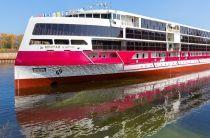
Vodohod signs strategic partnership agreement to provide direct presence in Asia
Vodohod Russian River Cruises signed on Wednesday, October 21, a strategic partnership agreement with Tam Wing Kun Holdings Ltd to provide the...
October 23, 2020 - Cruise Industry
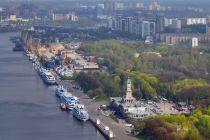
Russian river cruise operator Vodohod joins CLIA Europe
Russian river cruise operator Vodohod partnered with CLIA to build brand popularity across Europe. The new partnership brings Vodohod into the wider...
October 3, 2020 - Cruise Industry

Vodohod’s first Project PV300 river ship departs on maiden cruise
Project PV300 built by United Shipbuilding Corporation's Krasnoye Sormovo Shipyard (Sormovsky-Nizhny Novgorod, Russia) and recently delivered to...
August 28, 2020 - Cruise Industry
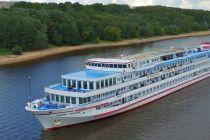
Emerald Waterways opens bookings for 2021 Russian River Cruises
The premium brand Emerald Waterways opened bookings for its 2021 Russian river cruise season. Voyages will feature a newly chartered...
July 27, 2020 - Cruise Industry
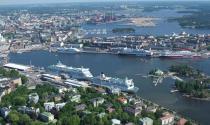
Production of Vodohod Russia's first expedition cruise ship starts at Helsinki Shipyard
The production of the first of the two luxury expedition cruise ships ordered from Helsinki Shipyard Oy started on April 27, 2020. Steel-cutting...
April 29, 2020 - Cruise Industry
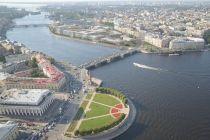
St Petersburg Russia’s Sredne-Nevsky Shipyard to build 2 new-class riverboats
Russia's Sredne-Nevsky Shipyard concluded an agreement with State Transport Leasing Company for the building of two "Project A45-90.2" passenger...
April 21, 2020 - Cruise Industry
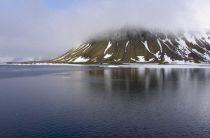
Vodohod Offers Arctic Cruises Along the Northern Sea Route
Cruise shipping along the Northern Sea Route and to Antarctica will be available to passengers starting from 2021, Russian cruise company Vodohod...
February 4, 2020 - Cruise Industry
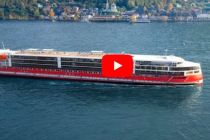
VIDEO: MS Mustai Karim Completes Sea Trials
United Shipbuilding Corporation’s (USC) Krasnoye Sormovo Shipyard successfully completed sea trials on the new Russian sea-and-river cruise...
November 27, 2019 - Cruise Industry
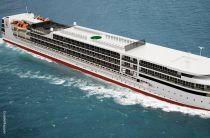
Mustai Karim Launched in Nizhny Novgorod
On September 11, 2019, Russia's largest cruise company Vodohod launched its new river and sea-going ship of the PV300-design - MS Mustai Karim...
September 16, 2019 - Accidents

Boat Crash Kills 11 on River Cruise in Volgograd
Investigators blamed a drunk captain for the boat crash that killed 11 people aboard a river cruiser in the city of Volgograd, Russia. A pleasure...
June 12, 2018 - show more news

